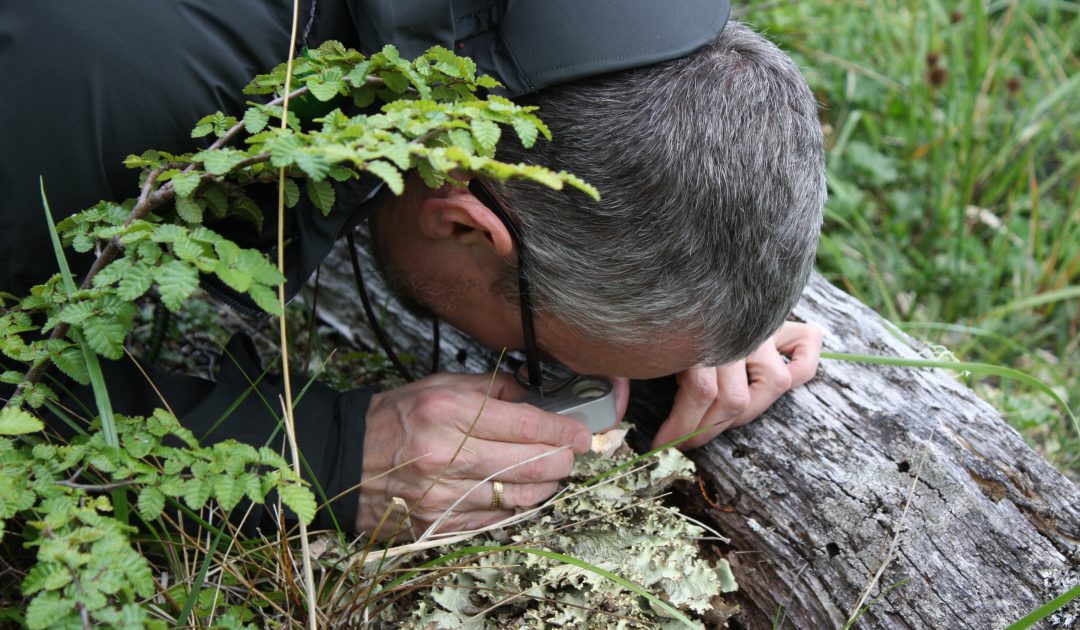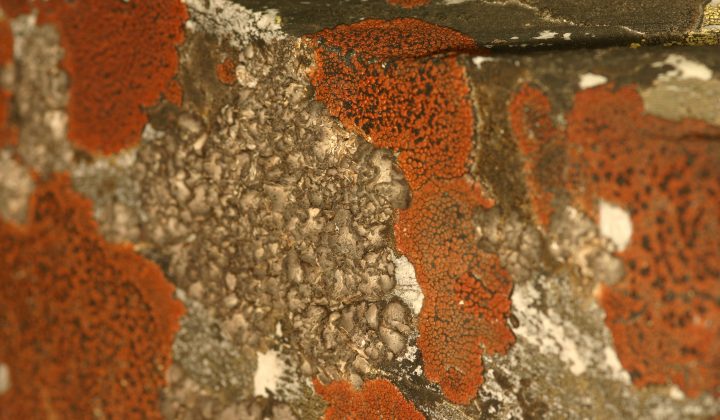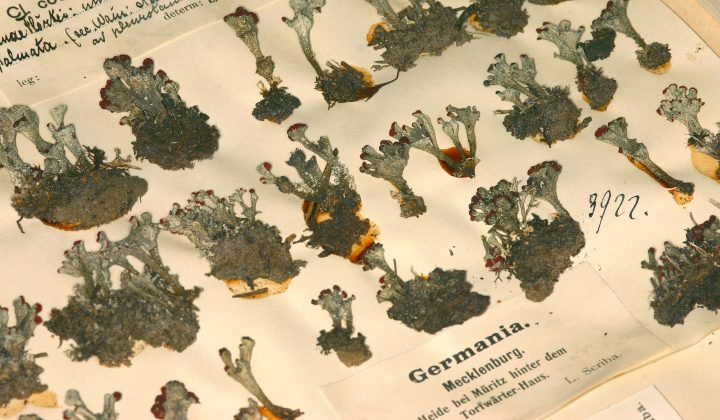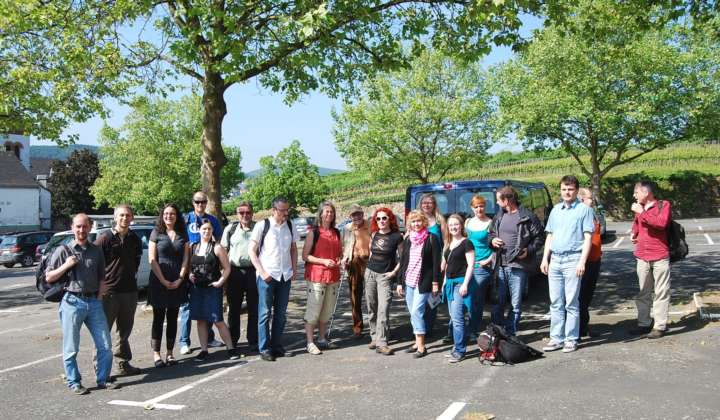Especially in the case of inconspicuous crustal lichens, we still do not know how many species there are on earth. Nowadays, genetic methods can help to discover new species or to better distinguish similar species from each other. The project “Lecanomics: New ways of species detection and recognition in a ubiquitous group of lichens” is part of the DFG priority programme “Taxon-omics”. Here we try to decompose the large and widespread lichen genus Lecanora into more natural units and study species delimitation using molecular genetic methods and involving amateurs and scientists who currently do not have access to these methods.
Publications:
Yakovchenko LS, Davydov EA, Ohmura Y, Printzen C (2019) The phylogenetic position of species of Lecanora s. lat. containing calycin and usnic acid, with the description of Lecanora solaris Yakovchenko & Davydov sp. nov. Lichenologist 51: 147-156. https://doi.org/10.1017/S0024282919000045
Gemeinholzer B, Vences M, Beszteri B, Bruy T, Felden J, Kostadinov I, Miralles A, Nattkemper TW, Printzen C, Renz J, Rybalka N, Schuster T, Weibulat T, Wilke T, Renner S (2020) Data storage and data re-use in taxonomy – transforming taxonomy into big data science. Organisms Diversity & Evolution 20: 1-8.
Bungartz F, Elix JA, Printzen C (2020) Lecanoroid lichens in the Galapagos Islands: the genera Lecanora, Protoparmeliopsis, and Vainionora (Lecanoraceae, Lecanoromycetes). Phytotaxa 431 (1): 1-85. https://doi.org/10.11646/phytotaxa.431.1.1
Borsch T, Stevens AD, Häffner E, Güntsch A, Berendsohn WG, Appelhans MS, Barilaro C, Beszteri B, Blattner FR, Bossdorf O, Dalitz H, Dressler S, Duque-Thüs R, Esser HJ, Franzke A, Goetze D, Grein M, Grünert U, Hellwig F, Hentschel J, Hörandl E, Janßen T, Jürgens N, Kadereit G, Karisch T, Koch MA, Müller F, Müller J, Ober D, Porembski S, Poschlod P, Printzen C, Röser M, Sack P, Schlüter P, Schmidt M, Schnittler M, Scholler M, Schultz M, Seeber E, Simmel J, Stiller M, Thiv M, Thüs H, Tkach N, Triebel D, Warnke U, Weibulat T, Wesche K, Yurkov A, Zizka G. 2020. A complete digitization of German herbaria is possible, sensible and should be started now. Research Ideas and Outcomes 6: e50675
Zhang YY, Wang XY, Li LJ, Printzen C, Timdal E, Niu DL, Yin AC, Wang SQ, Wang LS (2020) Squamarina (lichenized fungi) species described from China belong to at least three unrelated genera. Mycokeys 66: 135-157. https://doi.org/10.3897/mycokeys.66.39057
Miralles A, Bruy T, Wolcott K, Scherz MD, Begerow D, Beszteri B, Bonkowski M, Felden J, Gemeinholzer B, Glaw F, Glöckner FO, Hawlitschek O, Kostadinov I, Nattkemper TW, Printzen C, Renz J, Rybalka N, Stadler M, Weibulat T, Wilke T, Renner SS, Vences M (2020) Repositories for taxonomic data: Where we are and what is missing. Systematic Biology 69: 1231-1253.
Ivanovich C, Dolnik C, Otte V, Palice Z, Sohrabi M, Printzen C (2021) A preliminary phylogeny of the Lecanora saligna-group, with notes on species delimitation. Lichenologist 53: 63-79.
Davydov EA, Yakovchenko LS, Hollinger J, Bungartz F, Paminello C, Printzen C (2021) The new genus Pulvinora (Lecanoraceae) for species of the ‘Lecanora pringlei’ group, including the new species Pulvinora stereothallina. Bryologist 124: 242-256.
Davydov EA, Yakovchenko LS, Printzen C (2021) Validation of the combination Lecanora brandegeei (≡ Lecidea brandegeei). Opuscula Philolichenum 20: 71-72.




